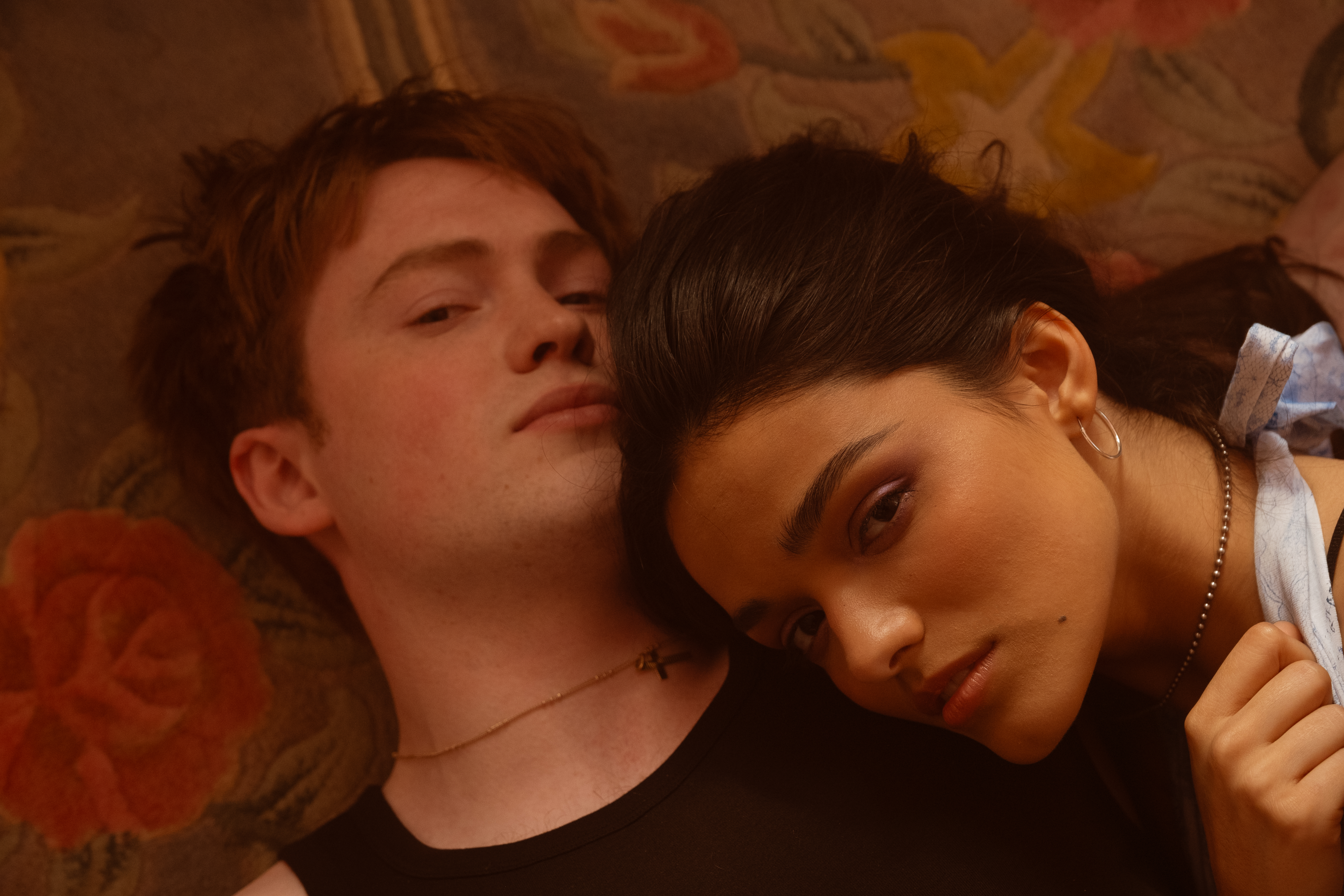Women on the Verge of HRT

Women on the Verge of HRT
(Photo © Joan Marcus)
No creative artist has come up with a more inspired title than Pedro Almodovar’s Women on the Verge of a Nervous Breakdown. In coining the phrase, Almodovar found a description of just about every piece of literature about women ever written: Anna Karenina, Madame Bovary, A Streetcar Named Desire (not a bad title itself), and just about any Brontë novel. They all concern women verging on madness. (Okay, exceptions include Jane Austen’s heroines and the Gone With the Wind‘s indomitable Scarlett O’Hara, but even the latter has a verge moment at the end of that novel.)
Marie Jones obviously agrees with this opinion, since she’s partially appropriated the title for her play about — what else? — two women on the verge of emotional breakdown. Her title is Women on the Verge of HRT. For those who don’t recognize the acronym, it stands for “hormone replacement therapy” and it instantly conjures the thought of menopause. The menopausal women in Jones’s piece are Anna (Kelly Taylor) and Vera (Joan D. Slavin), Belfast gals who’ve traveled to Donegal to hear their fave-rave singer, Daniel O’Donnell, in concert. Discovered in their tidy hotel room (production design by Robert Monaco) after their boy has worked his vocal and physical charms on them, they indulge in what used to be called “girl talk” but here is very much women-of-a-certain age talk.
Neither is happy with her half-gone life. Anna’s riled because her ex-husband has gotten his new wife pregnant, while Vera is bristling because her spouse hasn’t made love to her in donkey’s years and regards her as another household appliance. The women are so tiddly as a result of their remaining hormones being excited by crooner O’Donnell that they start vamping bellhop Fergal (Tom Souhrada), who’s on the run bringing them drinks. They’re so far gone that they regularly burst into keening song, as does the obliging Fergal. Later, in the pre-dawn hours, when they’ve taken Fergal’s suggestion about watching the sun come up on the coast, the women decide to confront their absent husbands and other people in their lives. They’re able to do so because, in this land of leprechauns and banshees, Fergal himself is something of a shape-shifter; he keeps morphing into Vera’s and Anna’s wounding parties, and his motley incarnations enable the women to face realities that are not necessarily soothing.
I saw this production with a friend who perhaps might be considered a woman on the verge and who suggested that Jones’s play is more relevant to women in countries where fewer options exist than in America. My reaction was that Anna’s and Vera’s dissatisfaction is universal, that troubled marriages are internationally rife and that they upset women whether or not they have satisfying careers. Jones’s play will have a great many women’s heads nodding in recognition despite the sometimes slight quality of the writing. (Presumably the lyrics to the original songs are by Jones, and they also leave something to be desired. The music is by Neil Martin, and Doug Oberhamer’s at the stage-side piano.) There are sitcom vibes in Jones’s first act when Vera and Anna are removing face creams and giving their hair the obligatory 100 brush strokes before retiring. By the time an intermission interrupts their reflections, some audience members may well have concluded that this is superficial entertainment getting by on the charm of wee aperçus.
The second act hits different chords, however, underlined by Robert Monaco’s realization of a murky shore. The tonal shift works more than might be expected because the women’s worries run deeper than they initially seem. Confronting the men who’ve used them (and almost used them up) becomes believable early-morning therapy. This, after all, is Ireland, where the ever-present supernatural is taken on faith, so Fergal’s behavior as catalyst for the women’s new self-assessments is in keeping with the mood change. When the lights finally dim –just as the sun rises, it’s up in the air as to whether or not Fergal was ever really there.
There’s plenty to be said for the efforts of director Lynne Taylor-Corbett and players Slavin, Taylor, and Souhrada. (Author Jones played Vera in the work’s first productions.) Although Vera and Anna keep up their appearances and seem girlish when thinking about Daniel O’Donnell, the actresses have hardly been glamorized. The play is about accepting age and change with as much grace as can be mustered. Slavin and Taylor work laudably towards that end. The difference between Anna and Vera is that the former admits how unhinged she’s becoming but the latter denies it at first; the contrasting attitudes are subtly handled. Souhrada, blessed with an affecting Irish tenor, is a big-chested chameleon in a part (or parts) reminiscent of the Conleth Hill and Sean Campion roles the Jones play Stones in His Pockets. (Jones apparently likes the idea of men slithering snake-like in and out of different skins — as, perhaps she’s implying that they do in real life.)
For zeitgeist-y reasons, this is a week for many female characters on the verge. (Is Venus in retrograde?) We’ve had Paula Vogel’s Oldest Profession and Michele Lowe’s String of Pearls. Marie Jones’s addition adds to the library of women’s theater comedy-dramas. Women on the Verge of HRT will have strong appeal to and resonance for women who are no longer in the blush of youth but rather in the flush, and hot flash, of middle age.












